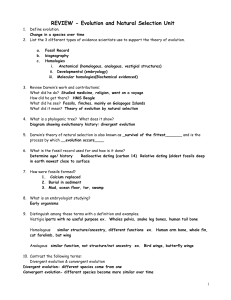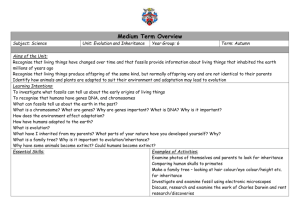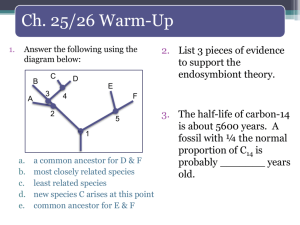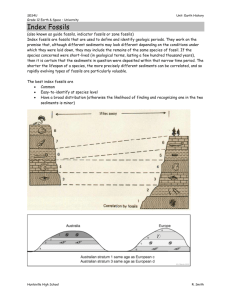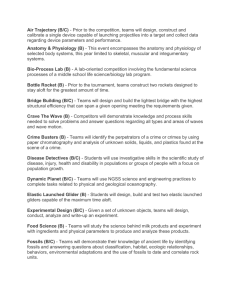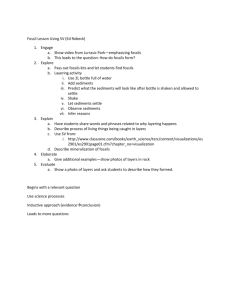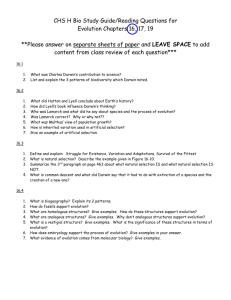Test 1 Practice Questions Your best friend notices your constant
advertisement
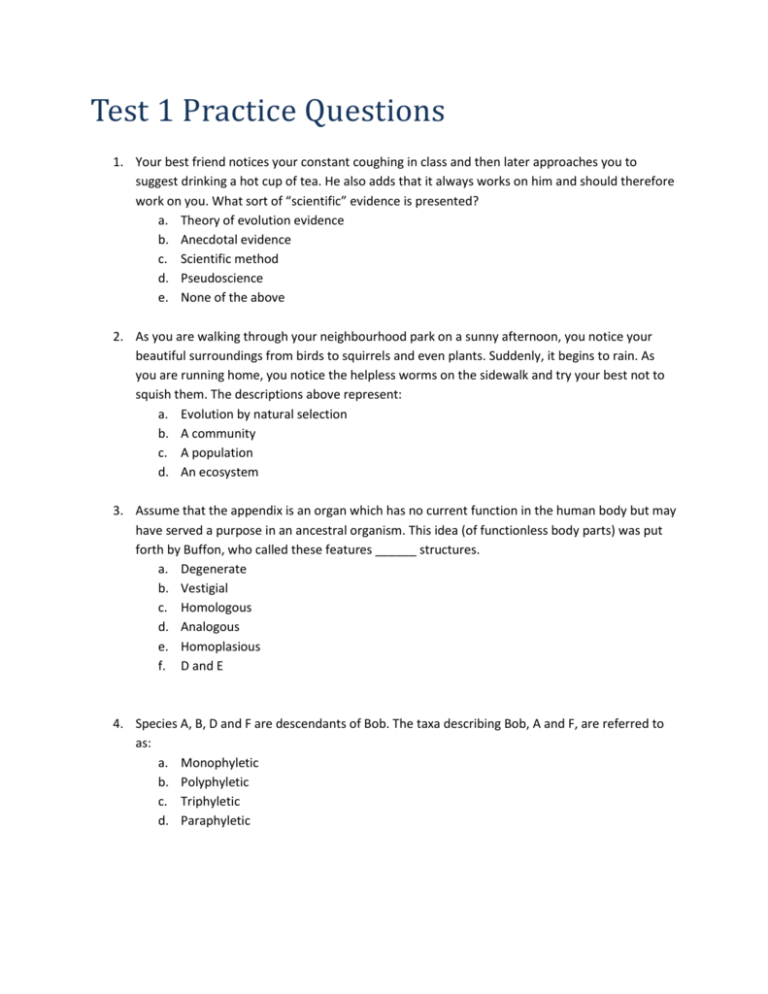
Test 1 Practice Questions 1. Your best friend notices your constant coughing in class and then later approaches you to suggest drinking a hot cup of tea. He also adds that it always works on him and should therefore work on you. What sort of “scientific” evidence is presented? a. Theory of evolution evidence b. Anecdotal evidence c. Scientific method d. Pseudoscience e. None of the above 2. As you are walking through your neighbourhood park on a sunny afternoon, you notice your beautiful surroundings from birds to squirrels and even plants. Suddenly, it begins to rain. As you are running home, you notice the helpless worms on the sidewalk and try your best not to squish them. The descriptions above represent: a. Evolution by natural selection b. A community c. A population d. An ecosystem 3. Assume that the appendix is an organ which has no current function in the human body but may have served a purpose in an ancestral organism. This idea (of functionless body parts) was put forth by Buffon, who called these features ______ structures. a. Degenerate b. Vestigial c. Homologous d. Analogous e. Homoplasious f. D and E 4. Species A, B, D and F are descendants of Bob. The taxa describing Bob, A and F, are referred to as: a. Monophyletic b. Polyphyletic c. Triphyletic d. Paraphyletic 5. Which one is an example of descent with modification: a. Beetles in the present generation are smaller than the preceding generation because of the drought and few plants (in present). b. 90% of beetles in the population have genes for green colour while 10% have genes for brown colour. After some generations, brown beetles are more common and make –up 70% of the population. 6. Convergent evolution (is): a. Not monophyletic b. Includes species that have a common ancestor c. Evolution of similar adaptations in distantly related organisms d. Both A and C e. Both B and C 7. What exactly is the theory of evolution? a. Life always become more complex b. Humans evolves from apes c. Living things are related to each other through common ancestry from earlier forms that were different from them (i.e. the current living things) d. New species arise through a process of random mutations 8. Why is genetic variation important, in particular to evolution? a. It provides raw material for natural selection b. It means that no two humans are genetically identical c. Genetic variation is not important for evolution d. Both A and B are true 9. Provide examples for selective pressures (1-3 examples). 10. How frequent the variety of genes or alleles are present in a population due to random events is called: a. Genetic variation b. Genetic drift c. Allele d. Phenotypic variation 11. Which theoretical model tells us an allele frequency for a trait causes a respective genotypic frequency to increase in a specific population BUT requires an equilibrium state in the population? a. Hardy-Weinberg Principle b. Mendel’s laws c. Darwin’s theory of natural selection d. Alfred Russel Wallace’s theory of natural selection e. C and D f. All of the above 12. Mass extinction caused by a meteor is an example of which theory? a. Uniformatarianism b. Gradualism c. Catasrophism d. Speciation 13. Which of the following relies more on the principle of parsimony? a. Natural selection b. Lamarck’s mechanism for evolution c. Cladistics d. Convergent Evolution 14. what could be a cause of an organism (and/or its fossils) being widely distributed? a. Plate tectonics b. Wind c. God d. Emigration e. Curiosity 15. Which is an important characteristic of homology? a. Population dynamics b. Similar genetics c. Different genetics d. Codominant genes 16. Which is true about fossils? a. they require more oxygen to be formed more often b. Fossils for soft bodied organisms like jelly fish are more common c. Fossils in mountain forest are found very often d. ~ 1% of all species to ever live have leaved behind fossils 17. Which is false about radioactive dating? a. Can be directly used with organic remains b. Is not limited by half-life c. It works best with volcanic rocks d. Rate of decay and measured amount of isotope is needed
